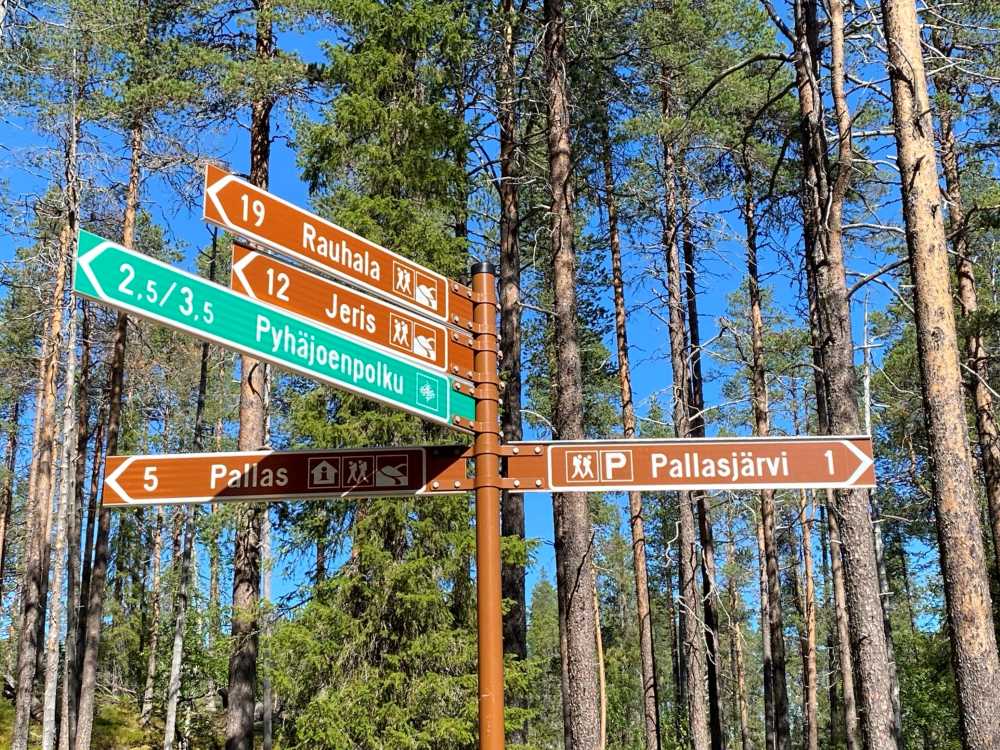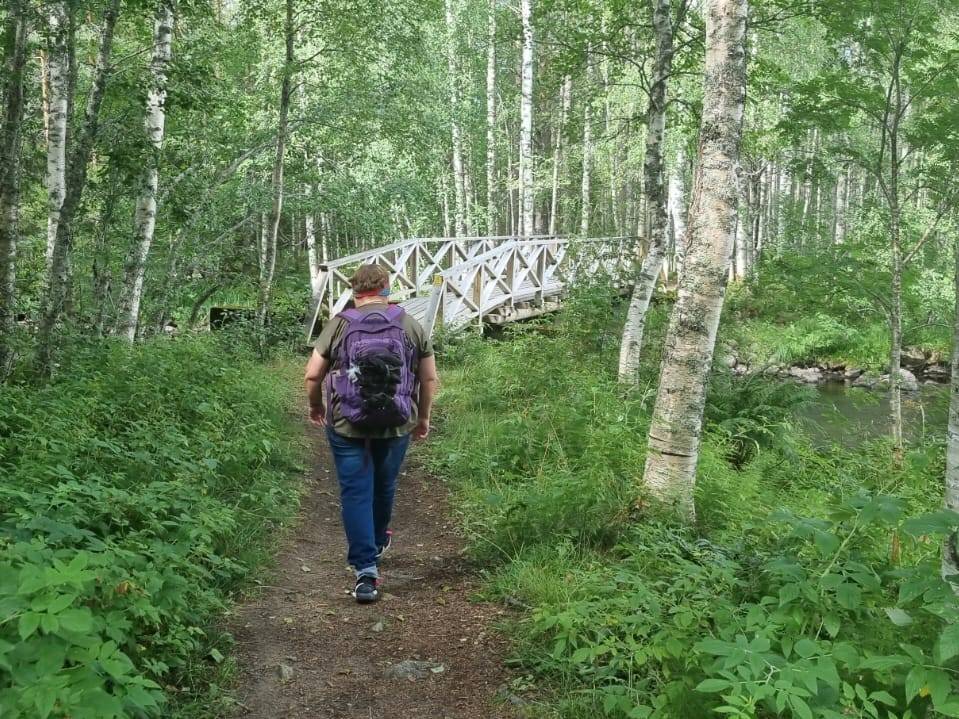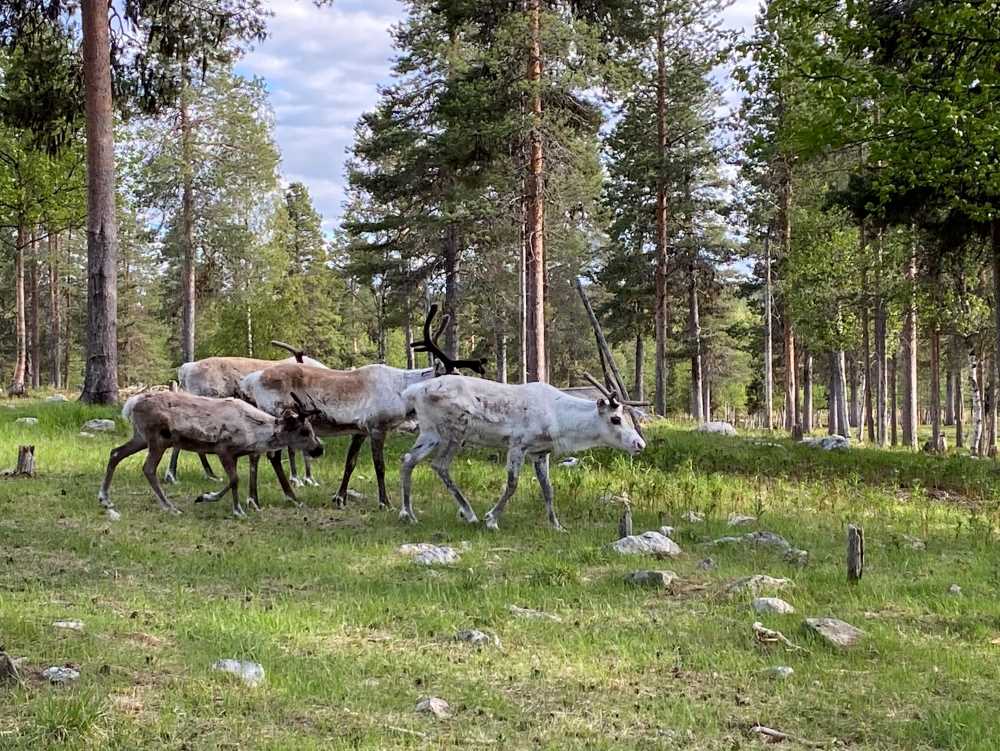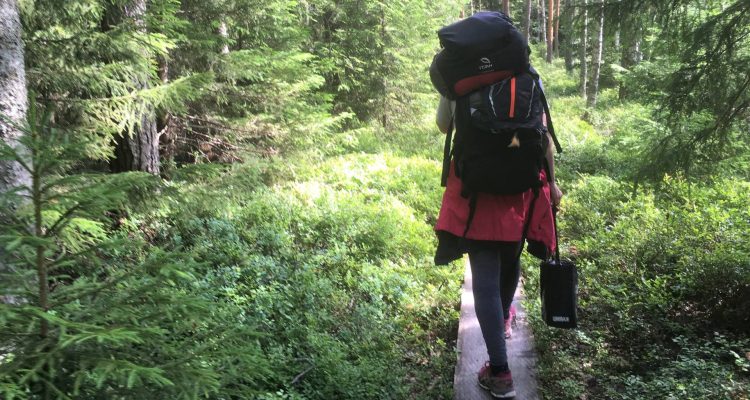Are you planning to do some hiking in Finland? Finland is known for forests and lakes, and the country provides amazing nature destinations to visit all year round. Finland is one of the safest countries in the world, but there are a few things that can make your hiking trips in the Finnish forests more enjoyable and safe. Here’s our guide to hiking in Finland!
Table of contents
- Everyman’s rights
- Where to go hiking in Finland?
- What to wear?
- What to pack?
- Safety when hiking in Finland
Everyman’s rights make hiking in Finland a bliss
Everyman’s right is a Finnish legal concept that gives people the right to access most of the country’s land and waterways. Everyman’s rights in Finland are quite broad and they also apply to foreign citizens. This is very exceptional in the world and one of the main reasons why Finland is the number one country for nature travel. National parks can be accessed free of charge, and most parks and recreational areas even provide lean-to shelters and firefood free of charge.
The everyman’s rights allow you to not only roam out in the nature in Finland, but also pick berries and mushrooms or go fishing on most waterways with a rod and line. Finnish forests are covered in arctic superfoods in summer and early autumn. Read more about the food that Finnish nature has to offer from our earlier posts:
- Blueberries are the superfood of Finland
- Cloudberries are the real gold of Lapland
- Cranberries are the world’s healthiest food
- Food from the nature – luscious lingonberries
- Food from the nature – yummy wild raspberries
- Foraging wild herbs in Finland
- Foraging for the most common mushrooms in Finland
- What is the difference between true morels and false morels?
- Mushroom picking in Finland is fun
You should remember that with the everyman’s rights come responsibilities. There are things that are restricted such as making fire. Picking up firewood from the forest is not allowed, and you should check forest fire warning before making fire in a designated fireplace. When a forest fire warning is in force, it is forbidden to start an open fire in or near a forest. You also need permits for hunting and fishing with nets, traps or a reel and lure.
Where to go hiking in Finland?
There are 41 national parks in Finland providing plenty of hiking opportunities for everyone. The oldest national parks were established back in 1938, and the newest one is from the year 2021. See the complete list of the national parks and description of each of them on our post National Parks in Finland.
In addition to the national parks, there are thousands of private and public nature reserves in Finland. Some of them can be visited by hikers, but some of them are so strictly protected that they cannot be visited. Natura 2000 areas in Finland are mostly based on already existing nature reserves.
There are five national hiking areas that were established by law for outdoor recreation. They are Evo, Ruunaa, Oulujärvi, Iso-Syöte, and Kylmäluoma. Metsähallitus has established also The Arctic Circle Hiking Area and the Inari Hiking Area, which have the same services as national hiking areas. All of them offer marked hiking or cross-country skiing trails and camping sites.
There are 12 wilderness areas in Finland. They are located in remote wilderness in Lapland and they are suitable for trekking for the experienced hikers.
You might also encounter hiking areas called recreation areas in Finland. There are recreation area associations that aim to maintain and develop recreation areas within their area. In order to promote recreational use, these associations purchase or lease areas, or acquire usage rights, and attend to their care and construction.
- Uusimaa recreation area association has a network of 40 recreation areas in the capital region and its surroundings
- Häme recreation area association maintains 18 areas in the Häme
- Pirkanmaa association has 8 recreation areas within 14 municipalities in its region
- Kymenlaakso lists 13 destinations that they maintain
- Päijänne has 14 recreation destinations within the lake Päijänne area
- Saimaa association has 4 areas in Puumala, Ristiina, Savonlinna and Mikkeli
- South Karelian foundation for recreation areas has 13 recreation areas to maintain
There are also few folk parks that provide hiking trails; Saari folk park in Tammela, Ruissalo in Turku, Kokonniemi in Porvoo, and Apia in Valkeakoski. Folk park is basically similar to recreation area, the name is only old-fashioned due to the history of the area.
You won’t run out of hiking trails in Finland. We have covered hundreds of these hiking destinations in our site, so check out sights on the map. Even a city break in Finland is a good opportunity to go for a hike as nature is never far away.

What to wear?
One of the main things to know about Finland is that it has four seasons: winter (December, January, February), spring (March, April, May), summer (June, July, August) and autumn (September, October, November). So, there won’t be snow all the time, and weather can also vary a lot between southern and northern Finland. Summers are actually super nice in Finland. In the last years, there has been about 40 days in summer when the temperature has exceed 25 degrees Celcius.
The key for preparing for hiking in Finland is to dress according to the season and check the weather forecast. Summers can be hot, but the temperature easily drops down at night. If you are camping outside, it’s good to have layers available just in case. Layers also form the basis of dressing up for hikes in winter. Base layer lets the moisture through, mid layer insulates body heat, and outer layer keeps away the wind, rain and snow. It is worth paying attention to materials. Many prefer, for example, merino wool from non-mulesed sheep as the base layer.
I would recommend wearing bright and colorful clothes or at least carrying some colorful items with you. Few years ago, a woman got lost in Torronsuo National Park and she was found by a paraglider who spotted her bright red jacket. In autumn, wearing red is a good idea anyway because of the hunting season:
- All you need to know about moose hunting in Finland
- All you need to know about deer hunting in Finland
What to pack?
Carrying a fanny pack or a small backpack with few essential items even on day hikes makes hiking safer. Read our tips about what to pack for a day hike in Finland. For overnight stays and treks more items are obviously needed. Stay tuned for our upcoming posts about packing for longer hikes.

Safety when hiking in Finland
Here are some safety tips that you might want to consider before hiking in Finland. Finland is a very safe country in all rankings, but the country is vast and conditions are harsh. Getting lost or injuring yourself when hiking can become a life threathening situation simply because the country is so sparsely populated and there might not be other hikers in the same location.
Preparedness is the key to a safe hiking trip
- Tell someone where you are going and when you should be expected back.
- Make sure your phone is fully charged before departing to any hiking trip, and if possible carry a powerbank with you. Note that in winter the phone batteries die quickly.
- There are areas in Finland where mobile network isn’t available. Don’t rely only on your phone when it comes to locating yourself. Especially if you are heading outside of marked trails, it would be good to have a printed map and compass with you, and have some basic knowledge on how to use them. Satellite phone is also an option.
- Check weather forecasts before the departure and prepare accordingly.
- Have some spare clothes/drink/food/matches and first aid kit with you (see our packing recommendations above).
- If possible, go with a friend.
Getting lost or needing help in emergency
- 112 Suomi is a mobile application for calling the emergency services and for emergency geolocation. Download 112 Suomi application free from from the Android and iPhone app stores.
- Authorities and Voluntary Rescue Service organize search and rescues regularly. If your friend is lost, contact 112 and police can assist organizing the search. Please note that dogs are often used, and it might be better to wait for the dog than to mess up all tracks in the area.
Encountering wild animals
There are several wild animals in Finland that might potentially be dangerous to humans. Animals very rarely attack anyone, but it is useful to know what kind of animals live in the forests and what should you do if you happen to encounter one. In most encounters the animals would be just as surprised as you and ran or slither away. The following information is not meant to scare you. But if you wonder what you should do, in extremely rare cases like these, here’s some information:
- A wolf – Hunting dogs and other domestic animals get killed by wolves every year, but wolves are not a concern for a hiker. Last known deadly attacks on humans by wolves happened back in 1882. If you encounter one, do not run, try to leave the situation calmly. If you cannot escape, climb a tree or on top of a rock or even a lean-to shelter. Avoid direct eye contact. If the wolf is behaving aggressively, call emergency services with the 112 Suomi app so your location can be tracked. In case of an attack, fight furiously.
- A lynx or wolverine – There are no known attacks by the lynx or wolverines in Finland ever. Same instructions would apply as for the wolves.
- A bear – Bear attacks on humans are extremely rare in Finland. If you happen to encounter a bear that is aggressive, back away calmly and avoid direct eye contact. Remember that the bears are faster than you and they can also outclimb you. In case of an attack, lie on your stomache and try to protect your head and neck with your hands. Do not move, play dead.
- An adder – This is the only venomous snake we have in Finland. Known also as vipers, the adders bite humans and dogs in summer, especially during berry picking season. Adder bites are painful, but the last fatality in Finland was about 30 years ago. Bites should always be taken seriously, particularly small children and elderly people who are bitten should be immediately taken to a hospital while remaining calm to avoid shock. There are over-the-counter pills intended to lessen the effects of the bites, but the hospital visit is still necessary. Please note that those antiviper pills are not recommended to be given to dogs. Dogs that have been bitten should be taken to the vet as snake bites are more dangerous to dogs. There are also other snakes in Finland that are not venomous. The adders usually have a zigzag dorsal pattern down the entire length of their bodies. They can also be so dark that the pattern is not clearly visible. Not dangerous species are a copper or brown colored slowworm and a dark colored grass snake with yellow dots behind its head.
- A moose, deer or reindeer are common to encounter in Finland but usually not dangerous at all. In some occassions, for example during rutting season in autumn or when protecting calves, they could be aggressive. In these kind of rare cases you should calmly back away, and hide behind a tree if necessary. Cars and moose don’t mix, and you should know that there are hundreds of car accidents related to moose on a yearly basis. Collisions with moose occur all over the country, including Helsinki. So, be cautious when driving in Finland, particularly during spring and autumn around sunrise and after sunset. In case of an accident, call 112 and let the authorities know about it even if there was no injuries to humans or damage to the car. Local hunters voluntarily track animals that have been involved in car accidents to check their condition.
- Insects – Mosquitos are mainly a nuisance to people but bees, horse flies and mosquitos can also cause allergic reactions to some. There are ticks which can transmit Lyme disease and viral encephalitis through a bite. You can protect yourself with long-sleeved clothing, insect repellent, and hat-nets during summer. If you are not allergic to mosquitoes, please avoid using Thermacell-like products that kill all insects, including pollinators, and is highly toxic, especially for bees and fish.

Have you been hiking in Finland? What would you add to our hiking guide?

